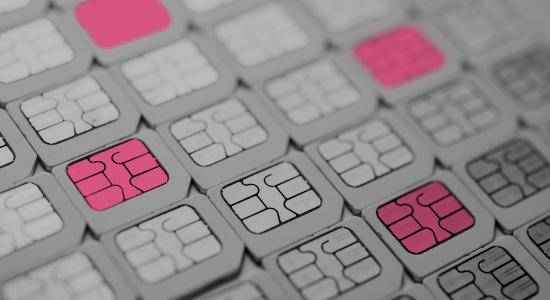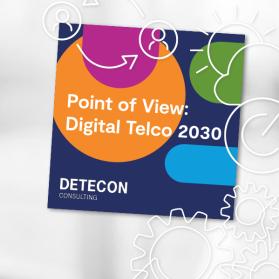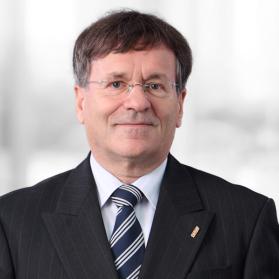The challenges for operators of fixed access networks are ongoing. On the one hand they have to bring down cost, on the other hand they have to increase revenues with fast and flexibles introduction of new services. This asks for reassessing the way fixed networks are set up and operated - resulting in a new eco-system.
In the access networks of today we find telco infrastructure appliances in the central office which are mostly built from proprietary hardware with a tightly integrated network software stack and proprietary interfaces.
Over many years this approach guaranteed carrier grade service delivery with respect to performance, quality and reliability. Network operators were reluctant to take the risks for specifying and designing multi-functional high performance devices. So telco vendors were engaging pretty much in standardization bodies defining the service delivery schemes more or less common for the world and in general protocols, which so led to black boxes fitting into this general scheme. It became common that via RFQ network operators selected one or two of the small group of vendors as long-term provider for specific blackbox devices.
Besides the dependency over longer periods on vendor specific solutions and the tied cost with such - often called "vendor lock" - innovation in such a multivendor environment is rather difficult, expensive and definitely slow even sometimes impossible.
However, the telco world has changed dramatically. Innovations and traffic-growth cycles require continuously an upgrade of access networks to cope with new demand from end users loyal to their smartphones, tablets and apps in most cases without revenue increases.
A new approach will help facing the challenges
A group of operators engaged together and their thoughts cumulated in the CORD vision, today supported by the ONF - Open Network Foundation alliance. CORD stands for "Central Office Re-architected as a Datacenter”. Ingredients to this approach are modern datacenter technology (e.g. commodity HW), cloud architecture methodologies (e.g. micro services) and SDN capabilities (e.g. separation of data and control plane).
In this context, disaggregation is referring to the approach of disassembling the today’s highly integrated network elements deployed in the access network SW and HW wise and relocate the functionality in a more effective way. In other words, disaggregation separates the software logic from the hardware directed to perform it. It is called CUPS (Control-/User Plane Separation), too and is the underlying original intent of SDN.
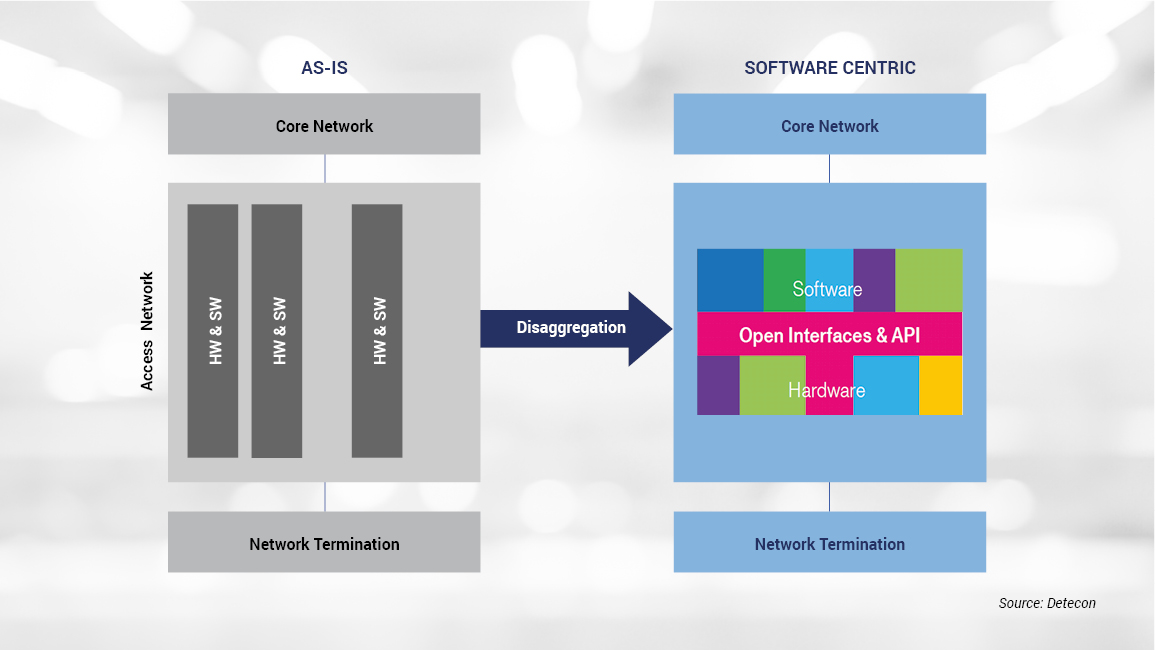
Underlying company strategic targets for the new approach in setting up and orchestrating access networks according to CORD are:
- Bringing costs (CAPEX and OPEX) down through changing the ecosystem
- “Softwarize” the network by prioritizing Cloud, SDN and NFV usage
- Use the elastic of data center approach and edge cloud computing for introduction of new services with optimized time to market
Through alliance work network operators can gain back control
There is neither a common valid paved pathway nor a full set of standardization documents. Therefore, it is up to an individual approach a network operator has carefully to determine. Whether, how and when to transform to the disaggregated access network has to be evaluated at the end carefully dependent on the specific situation of each network operator. Nonetheless, the whole idea is that an open community with an open software approach will allow benefiting from achievements already made by others.
There is a new level of collaboration and cooperation among operators, which share the same baseline vision. It is a much deeper teamwork beyond defining global service delivery models and interconnection points, although not completely new. Every network operator has the choice to contribute and to strengthen this approach achieving finally new eco-system to benefit from and look for new partners for design and implementation.
Reference architecture is ready for use
Although the concept of CORD, which lays out the foundation already back in 2015, is applicable to all kinds of access network technologies (e.g. xDSL, WTTH; PON; DOCSIS) the realization in GPON networks got some kind of priority and became nowadays the conceptual proof point and first built outs. A reference architecture for SEBA V1.0 is public available (SDN Enabled Broadband Access). Deutsche Telekom went alredy live with the first field deployments calling it Access 4.0.
As the following figure illustrates today´s blackbox devices OLT and BNG are replaced by a white box device taking care for the GPON specific MAC layer combined with small datacenter built out of common spine/leaf switches and some servers offering processing power and storage. The control is separated from the user plane and put onto servers by virtualization according to SDN paradigm.
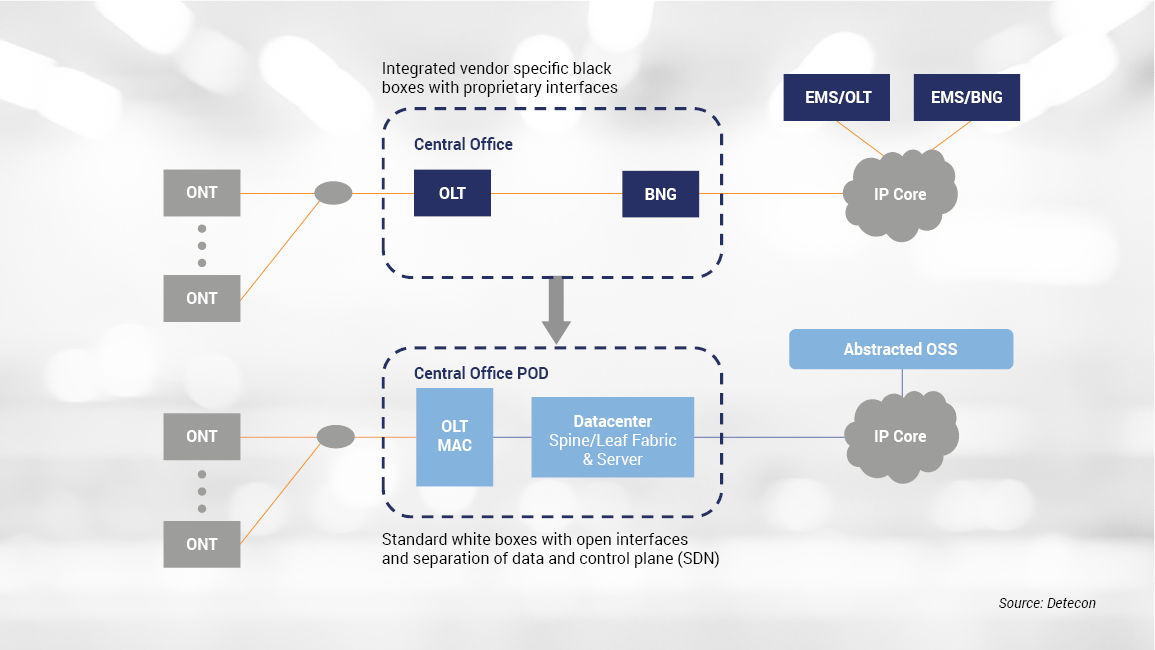
The building block is called a CO POD – a Central Office Point of Delivery - and takes care for the service delivery for the users connected to it. The number and the size of a POD may differ according to the already existing network and the operator specific strategic goals. It may even physically split up.
As indicated the approach of access disaggregation is much more than just reshuffling some HW and SW items. It affects the complete ecosystem, the roles vendors and operators play today and the way of working and delivering. The first movers in this segment putting things into industrialization already. Therefore, it is time for the operators to make up their mind and not to miss this train by accident.
Key success factors for fixed access disaggregation
Although an available reference design and exemplary instantiations by operators may help following the first movers, such transformation should be evaluated in great detail to consider all the impacts. Every fixed access network operator has its specific starting point and an own way to consider how to begin and complete the transformation journey to rebuild the fixed access network and to operate this in a new profitable ecosystem without jeopardizing ongoing business.
Following success factors can be identified for network operators in the new ecosystem:
- Participate in the alliance work by own contributions to strengthen the market footprint of this approach
- Adapt processes to open alliance work, in taking over the responsibility and ownership previous in hands of vendors
- Modularize whatever is possible in a viable business case to achieve flexibility and to broaden the ecosystem
- Suspend large vertical siloes in favour of an agile organization focusing on standard hardware and software defined solutions
This new ecosystem enforces changes within the established vendor landscape, too.
Success factors are:
- Give up reluctance and extend offerings through modularize solutions without proprietary interfaces
- Use the competitive advantages of being already a long time in the market and based on experience and scale
- Break up the organization into smaller units to deliver self standing modules in a fast and agile way.
- Extend the operator dedicated offerings by integration and test support as well as managed Services.
References
1. SDN Enabled Broadband Access (SEBA) ; Reference Design ONF TS-100; Version 1.0 | March 2019 The Open Networking Foundation http://www.opennetworking.org
2. DT's Access 4.0 Team Loses Its Cherry & Hits the Eggnog; https://www.lightreading.com/automation/dts-access-40-team-loses-its-cherry-and-hits-the-eggnog/d/d-id/755017
3. Deutsche Telekom on its Access 4.0 next generation BNG partnerships; https://www.rtbrick.com/videos/deutsche-telekom-on-its-access-40-next-generation-bng-partnerships
4. Deutsche Telekom’s Access 4.0 transforms the network edge; http://www.gazettabyte.com/home/2020/2/24/deutsche-telekoms-access-40-transforms-the-network-edge.html


